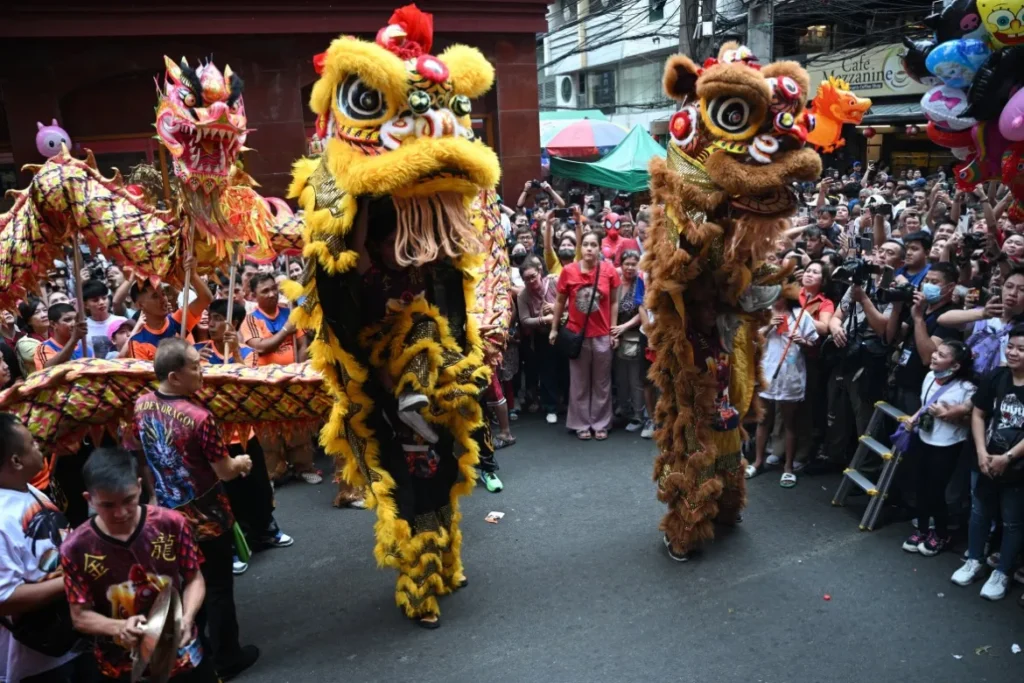Chinese New Year, also known as the Spring Festival (春节, Chūnjié), is the most significant traditional festival in Chinese culture. It marks the beginning of the Lunar New Year and is celebrated by millions across China and in Chinese communities worldwide. Rooted in thousands of years of history, it is a time of family reunions, cultural rituals, and festive joy. Each year is associated with one of the twelve animals in the Chinese zodiac, and the Year of the Snake (蛇年, Shé Nián) is particularly symbolic, representing wisdom, intuition, and transformation.
With grand celebrations spanning 15 days, the festival is filled with traditions that have been passed down for generations. From fireworks and red decorations to the deeply ingrained customs of ancestor worship and feasting, the Spring Festival remains an unparalleled cultural phenomenon. As millions travel home to celebrate, the world witnesses one of the largest human migrations—Chunyun (春运)—as people journey to reunite with family and welcome the new year with blessings and joy.
The Significance of the Year of the Snake
The Chinese zodiac (生肖, Shēngxiào) is a cycle of twelve animals, each representing a year in a repeating pattern. The Snake is the sixth animal in this cycle, following the Dragon and preceding the Horse. Those born in the Year of the Snake are believed to inherit certain personality traits, including intelligence, charm, mystery, and resourcefulness.
The Snake holds deep symbolism in Chinese culture. Unlike Western perceptions, where snakes can represent danger, in China, they are often associated with wisdom, longevity, and transformation. Some even view the snake as a smaller version of the dragon, a revered mythical creature in Chinese folklore.
According to Chinese astrology, the Year of the Snake is one of deep reflection, careful planning, and strategic decisions. It is believed to be a time when people should trust their instincts and make calculated moves rather than acting impulsively. The elements of the year (such as Water, Wood, Fire, Earth, or Metal) further influence the year’s fortunes, making it unique in each zodiac cycle.
Preparations and Cleaning (大扫除, Dà Sǎo Chú)
In the weeks leading up to the New Year, families thoroughly clean their homes to sweep away bad luck and misfortune. This deep cleaning, known as Dà Sǎo Chú, symbolizes letting go of the past and welcoming new opportunities.
Reunion Dinner (年夜饭, Nián Yè Fàn)
On New Year’s Eve, families gather for the most important meal of the year: the Reunion Dinner. Traditional dishes include:
•Fish (鱼, Yú) – Symbolizes abundance and prosperity.
•Dumplings (饺子, Jiǎozi) – Represent wealth due to their resemblance to ancient Chinese gold ingots.
•Longevity Noodles (长寿面, Chángshòu Miàn) – Symbolize a long and prosperous life.
•Sticky Rice Cake (年糕, Niángāo) – Represents growth, progress, and rising success.
The dinner is a time of warmth, gratitude, and respect for family bonds, with many offering toasts to health and fortune.
Red Decorations and Fireworks
The color red dominates the festival, as it is believed to bring luck and ward off evil spirits. Families decorate their homes with:
•Spring Festival couplets (春联, Chūnlián) – Phrases expressing good fortune and happiness.
•Paper cuttings (剪纸, Jiǎnzhǐ) – Intricate designs symbolizing prosperity.
•Fu (福) Character – Often hung upside down to symbolize “luck arriving” (福倒, Fúdào).
At midnight, fireworks explode across China, marking the transition into the New Year. The tradition of setting off firecrackers stems from an ancient legend where loud noises were believed to scare away the monster Nian (年兽, Nián Shòu).
Red Envelopes (红包, Hóngbāo)
Elders gift red envelopes (Hóngbāo) filled with money to children and younger family members. This tradition, known as 压岁钱 (Yā Suì Qián), is meant to bring blessings and ward off bad luck. With the rise of technology, many now exchange digital red envelopes through mobile payment apps.
Dragon and Lion Dances
Public celebrations feature lion dances (舞狮, Wǔshī) and dragon dances (舞龙, Wǔlóng), performed to drive away evil spirits and attract good fortune. These performances are often accompanied by the rhythmic beating of drums and cymbals, creating a lively atmosphere.
The Impression of Chinese New Year on the World
Chinese New Year is not just celebrated in China but also in Singapore, Malaysia, Taiwan, Hong Kong, and other regions with significant Chinese populations. Cities like San Francisco, London, Sydney, and Vancouver host massive parades, reflecting the global significance of the festival.
The festival also has a profound economic impact. The holiday period sees massive consumer spending, with billions spent on travel, gifts, food, and decorations. The demand for New Year’s goods, fashion, and luxury items surges, contributing significantly to the global economy.
Additionally, as Chinese culture continues to influence the world, many non-Chinese communities participate in Lunar New Year festivities, embracing the traditions of feasting, gifting, and cultural performances.
Predictions and Superstitions for the Year of the Snake
Every Chinese zodiac year brings its own unique energy, influencing global and personal fortunes. The Year of the Snake is expected to be a time of introspection, strategic planning, and cautious decision-making. In Chinese metaphysics, snakes are associated with transformation and wisdom, making it a year suited for personal growth and calculated risks.
Fortunes of Snake-Born Individuals
People born in the Year of the Snake (e.g., 1953, 1965, 1977, 1989, 2001, 2013) are believed to have a keen intellect and strong intuition. However, during their zodiac year (本命年, Běnmìng Nián), they may face challenges and need to take extra precautions to protect themselves from misfortune. Many wear red accessories, such as red underwear or bracelets, to ward off bad luck.
Lucky and Unlucky Elements for the Year of the Snake
•Lucky Colors: Black, Red, Yellow
•Lucky Numbers: 2, 8, 9
•Lucky Flowers: Orchid, Cactus
•Unlucky Colors: White, Gold
•Unlucky Numbers: 1, 6, 7
Chinese New Year is a festival that transcends time, geography, and culture. The Year of the Snake, in particular, embodies wisdom, resilience, and transformation. As millions gather to celebrate with feasts, fireworks, and family reunions, the traditions of honoring ancestors, sharing blessings, and looking forward to the future continue to prevail.
No comments yet.








